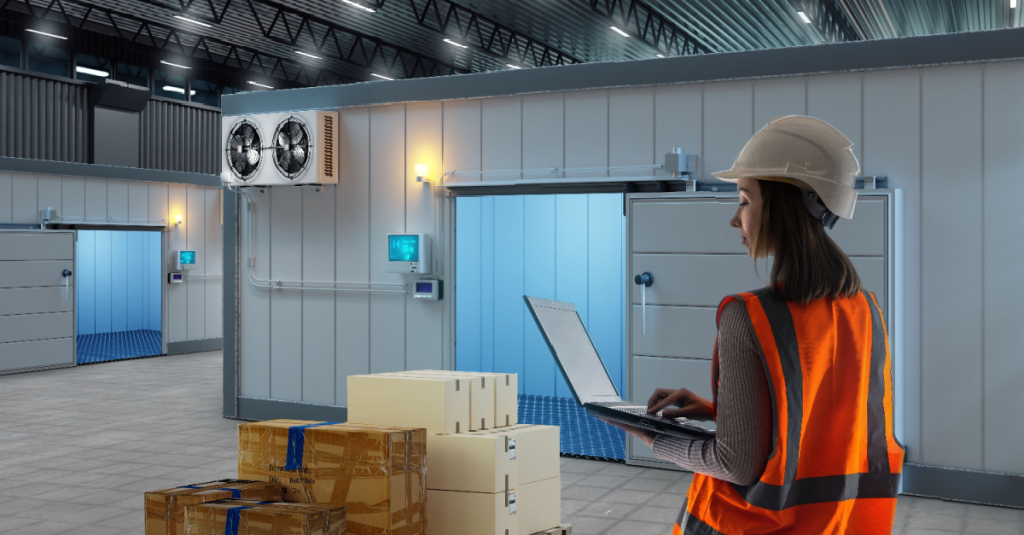The transportation of temperature-sensitive products has evolved dramatically over recent years. Modern cold chain logistics represents a sophisticated network of technologies and processes designed to maintain product integrity from production to consumption. For industries dealing with perishable goods, particularly food and pharmaceuticals, these innovations are not just improving efficiency—they’re revolutionizing what’s possible in global distribution.
Understanding Cold Chain Logistics Fundamentals
Cold chain logistics refers to the management of temperature-controlled supply chains. Unlike standard logistics operations, cold chains must maintain specific temperature ranges throughout the entire journey of a product. Any deviation, even for brief periods, can compromise product quality, safety, and usability.
The stakes are particularly high for food products, where temperature fluctuations can accelerate spoilage and potentially create food safety risks. According to food safety standards established by regulatory bodies, many perishable foods must be kept within narrow temperature ranges to prevent microbial growth and preserve nutritional value.

Critical Components of Modern Cold Chain Systems
Today’s cold chain logistics infrastructure integrates several critical components that work together to ensure product integrity:
Temperature-Controlled Transportation
The backbone of any cold chain is the fleet of vehicles specially designed to maintain precise temperatures. Modern refrigerated transport options include:
- Refrigerated trucks with multi-temperature zones
- Specialized air freight containers with active cooling systems
- Temperature-controlled shipping containers for ocean freight
- Last-mile delivery vehicles with insulated compartments
These transportation solutions incorporate redundant cooling systems and real-time monitoring to maintain consistency even under challenging conditions.
Advanced Packaging Solutions
Packaging plays a crucial role in temperature maintenance, particularly during transfer points where products might be temporarily exposed to ambient conditions. Innovations in this area include:
- Phase-change materials that absorb or release heat to stabilize temperatures
- Vacuum-insulated panels that provide superior insulation with minimal thickness
- Smart packaging with embedded temperature indicators
- Biodegradable insulation materials that maintain performance while reducing environmental impact
Continuous Monitoring and Tracking
Perhaps the most transformative development in cold chain logistics has been the implementation of continuous monitoring systems. These technologies provide:
- Real-time temperature and humidity tracking
- Location monitoring throughout the journey
- Automatic alerts when parameters exceed defined thresholds
- Complete chain-of-custody documentation

Revolutionary Technologies Transforming Cold Chains
Several emerging technologies are fundamentally changing how cold chains operate, enabling unprecedented levels of control and visibility:
Internet of Things (IoT) Integration
IoT devices are revolutionizing cold chain management by connecting previously isolated components into networked systems. Temperature sensors, GPS trackers, and environmental monitors now communicate continuously with central platforms, creating an unbroken chain of data.
This connectivity enables immediate interventions when problems arise, such as dispatching maintenance teams when refrigeration systems show early signs of malfunction or rerouting shipments when delays might compromise temperature integrity.
Predictive Analytics and AI Implementation
The vast amounts of data generated by modern cold chains create opportunities for predictive approaches:
- Machine learning algorithms that anticipate equipment failures before they occur
- Route optimization that accounts for weather patterns and traffic conditions
- Demand forecasting that reduces waste by aligning production with actual needs
- Energy usage optimization that reduces environmental impact while maintaining temperatures
Blockchain for Transparency and Verification
Blockchain technology is being deployed to create immutable records of cold chain conditions:
- Tamper-proof documentation of temperature conditions throughout the journey
- Verifiable chain-of-custody records
- Smart contracts that can automate payments when conditions are properly maintained
- Enhanced traceability during food safety investigations
Industry-Specific Cold Chain Innovations
Different sectors have developed specialized cold chain solutions tailored to their unique requirements:
Agricultural Products and Fresh Produce
For fresh produce, maintaining not just temperature but also humidity and atmospheric composition is critical. Innovations in this sector include:
- Modified atmosphere packaging that slows ripening processes
- Ethylene scrubbers that remove gases that accelerate ripening
- Hydrocooling systems that rapidly reduce field heat before transportation
- Time-temperature indicators that provide visual cues about product freshness
Pharmaceutical and Biomedical Applications
The pharmaceutical cold chain often requires even more stringent controls than food applications:
- Ultra-low temperature solutions for vaccines and biologics
- Validated thermal shipping systems with qualification documentation
- Temperature mapping studies for storage facilities
- Specialized solutions for clinical trial materials
Seafood Industry Advancements
The seafood industry presents unique challenges due to the highly perishable nature of its products:
- Slurry ice systems that provide faster cooling without physical damage
- Super-chilling techniques that extend shelf life without freezing
- Ozone-based systems that reduce bacterial contamination
- Specialized monitoring for both temperature and freshness indicators

Regulatory Landscape and Compliance
Cold chain operations must navigate complex regulatory requirements designed to ensure product safety:
Food Safety Modernization Act (FSMA) Implications
The FSMA has significantly impacted cold chain operations for food products in the United States. Key requirements include:
- Preventive controls for temperature management
- Verification of temperature maintenance throughout distribution
- Documentation of corrective actions when deviations occur
- Supplier verification programs that extend compliance throughout the supply chain
For detailed information on these standards, the FDA’s food safety resources provide comprehensive guidance for industry professionals and consumers alike.
Sustainability Challenges and Solutions
As cold chains expand globally, their environmental impact has come under increased scrutiny:
Energy Efficiency Improvements
Modern cold chain systems are incorporating numerous energy efficiency measures:
- Advanced insulation materials that reduce cooling requirements
- Solar-powered refrigeration for warehouses and some transportation
- Waste heat recovery systems
- Alternative refrigerants with lower global warming potential
Reducing Food Waste Through Better Cold Chains
Perhaps the most significant environmental benefit of improved cold chains is the reduction of food waste:
- Extended shelf life means more products reach consumers before spoiling
- Better monitoring prevents unnecessary discarding of products that remain safe
- Improved forecasting reduces overproduction and associated waste
- Maintained nutritional value encourages complete consumption
The Future of Cold Chain Logistics
Looking forward, several emerging trends will likely shape the continued evolution of cold chain logistics:
Automation and Robotics
Automated systems are increasingly handling temperature-sensitive products:
- Autonomous refrigerated delivery vehicles
- Robotic picking systems in cold storage warehouses
- Automated loading and unloading systems that minimize door openings
- Drone delivery for urgent last-mile distribution of medical supplies
Personalized Cold Chains
As e-commerce expands into more temperature-sensitive categories, we’re seeing the development of solutions tailored to individual consumer needs:
- Residential cold chain delivery boxes
- Customized temperature profiles for individual preference rather than just safety
- Direct farm-to-consumer models with integrated cold chain solutions
- Health monitoring integration with pharmaceutical cold chains
Recommended Resources
For those interested in exploring cold chain logistics further, the following resources provide valuable insights:
- The FDA’s comprehensive resource on food safety standards offers critical guidance for anyone involved in the perishable food supply chain.
Conclusion
The innovations in cold chain logistics represent a remarkable convergence of technology, science, and operational excellence. As these systems continue to evolve, they enable fresher products, wider distribution, and safer consumption—all while working to reduce environmental impact.
For businesses operating in this space, staying current with these innovations isn’t just about competitive advantage; it’s about fulfilling the fundamental promise to deliver products that are safe, effective, and as fresh as possible to end consumers. The future of cold chain logistics will likely bring even more precise, sustainable, and accessible solutions, further expanding the possibilities for global distribution of temperature-sensitive goods.
FAQ: Cold Chain Logistics
Q: How have cold chain monitoring systems improved in recent years?
A: Modern monitoring systems now provide continuous real-time data rather than just point-in-time readings. They incorporate wireless connectivity, cloud-based data storage, automated alerts, and integration with enterprise management systems. This allows for immediate intervention when issues arise and comprehensive documentation for regulatory compliance.
Q: What innovations are addressing the environmental impact of cold chains?
A: The industry is implementing several solutions, including more energy-efficient refrigeration technology, natural refrigerants with lower global warming potential, better insulation materials, renewable energy integration for facilities, and logistics optimization to reduce unnecessary transportation.
